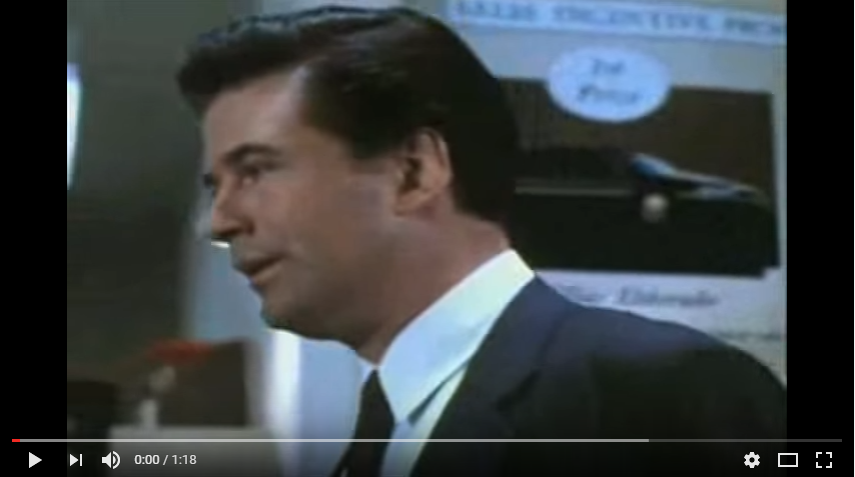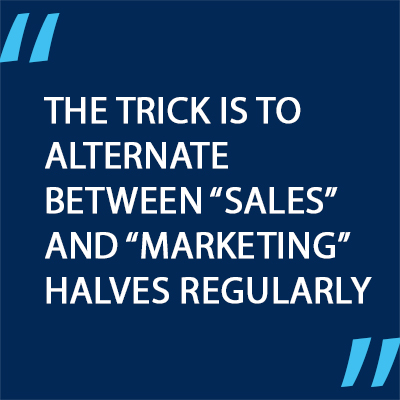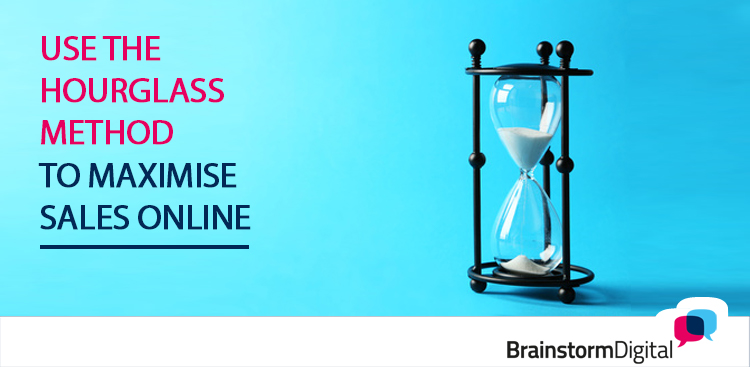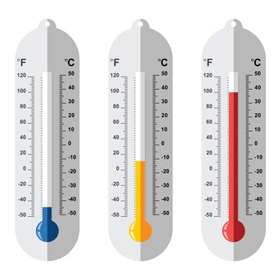 “A-B-C. A – Always, B – Be, C- Closing. Always be closing. ALWAYS BE CLOSING…..
“A-B-C. A – Always, B – Be, C- Closing. Always be closing. ALWAYS BE CLOSING…..
“A guy don’t walk on the lot lest he wants to buy. They’re sitting out there waiting to give you their money. Are you gonna take it? ARE YOU MAN ENOUGH TO TAKE IT?”
Well, over the past few weeks, it’s felt like my Inbox has been taken over by a bunch of Alec Baldwins, all aggressively trying to sell to me, whether I want it or not.
You see, we’ve been working on a new resource for you, showing examples of real-life online sales funnels that every business can learn from in order to improve their online marketing.
To put that together, we subscribed to several dozen email lists from a wide variety of companies, and carefully tracked exactly what emails each company sent next in order to nurture and convert its new subscribers.
Let’s just say that good examples were few and far between.
The vast majority fell into two camps.
By far the largest were the Alec Baldwins. It really felt like they were yelling at me the whole time. “Here’s what we do! Buy from us now! Time limited offer! Only 20 minutes left! Here’s more about what we do! Come visit our stand! Enquire now!”
They didn’t actually use that many exclamation marks, but I could read them through the text… These companies came across as p-u-s-h-y.
The smaller group never tried to sell to me at all. You can call them the anti-Alec Baldwins because they were never closing.
Some just sent out harmless newsletters about their Christmas dinners, the hours they’d be closed on over the holidays and their latest hires. Others sent out a lot of really great tips and useful advice – the kind of helpful material that really is “best practice”….
But that was it. They never once mentioned their products or services in a promotional way or offered any kind of path towards a purchase.
I think both these approaches are equally bad.
The Alec Baldwin companies scare people off. Nobody likes to be sold to (even if they want to buy!), and those emails hold zero interest to people who are great prospects – but are not yet ready to take out their wallets.
The anti-Alec Baldwins make it too hard for people to buy from them. Don’t expect people to make that jump from “We like that company, their advice is really good” to “I’m going to hire them” by themselves, because most times – they won’t.
You need to help them by giving them active opportunities to buy from you directly, or to make an enquiry. You need to put an offer right under their nose.
The problem is that most companies get trapped into one approach or the other, and then can’t understand why their marketing isn’t converting.
In the digital marketing class I taught this summer, one of my students – a marketing manager from a large professional organisation – was practically in tears telling me the pressure she was under to make more and more sales to their email subscribers. She knew perfectly well she was ‘burning’ the list by bombarding them with offers, but her bosses thought that was what “marketing” was about.
At the other end, companies are simply afraid to alienate their subscribers by selling… Or they just don’t know how to do it. So they don’t.
How do you find the happy medium? What’s the right combination of emails to send your subscribers?
How do you structure your sales funnel so that you get the maximum number of sales, without putting people off?
I think of it like an hourglass:

On one half, you have your “Marketing” emails. These emails don’t sell anything directly, but they do fulfil an important function. They help your subscribers understand why they need your services and the value that you deliver. They help them really want to buy from you, so that when they get the opportunity – they’ll jump on it.
On the other half, you have your “Sales” emails. These give your readers the chance to either buy from you directly, or take a step closer (for example, ask for a consultation or request more information about a particular product or service). This is about closing the deal, and actually turning them into customers – although you don’t want to be as aggressive as Alec Baldwin! These emails should still be interesting and useful even to people who do not want to buy from you then and there.
 The trick is to alternate between the “sales” and “marketing” halves regularly.
The trick is to alternate between the “sales” and “marketing” halves regularly.
Concentrate on one half of the hourglass – and then turn it upside down, and do the other half. Then turn it upside down again….
So, for example, when you get a new subscriber, you might sell hard initially, pushing an offer you hope they can’t refuse. After all, they’ll never be as enthusiastic as in those first few days.
But if they do refuse, back off. Give them a breather – and market.
Turn over the hourglass, and send them some new insights into your area that will blow them away. Help them overcome their objections to working with you. Show them the benefits – without hitting them over the head for the sale.
Once you have spent some time relationship-building, try for the sale again. Perhaps ask them to register for a webinar which will include an opportunity to buy at the end, or offer a one-off workshop.
But once that’s over – go back to “marketing”. And then rinse and repeat indefinitely.
The reason this works so well is that you need both “marketing” and “sales” to acquire new customers. They work together, and you need to achieve a balance.
Many companies think of these as linear – you market first, then that leads to a sale. Maybe that’s the way it used to be. (It’s the classic image of a “sales funnel”, if you’re familiar with the marketing theory.)
But it’s not what happens with modern digital marketing. Once you have an email subscriber, you will have a relationship with them for many years. It is vital that you both consistently market to them – and give them regular opportunities to buy, testing the water to see whether they’re ready to take that next step.
It’s not linear – it’s messy!
So when you plan your company’s online marketing for 2017, think of the hourglass. And make sure you are regularly turning it over, to maximise sales.







